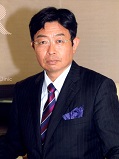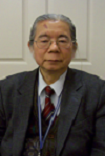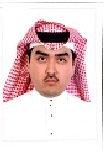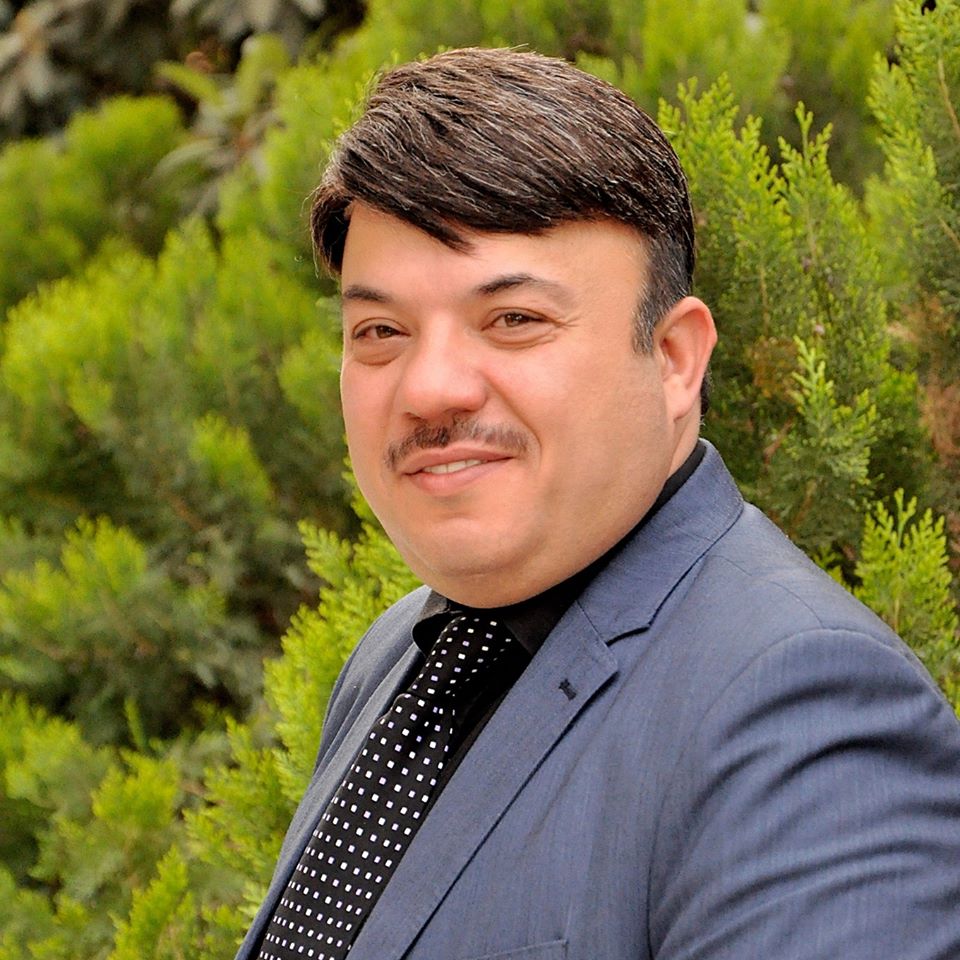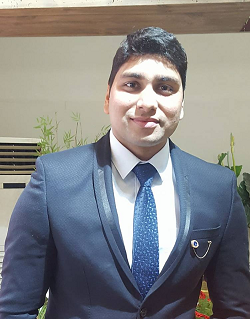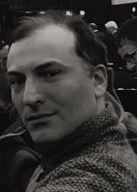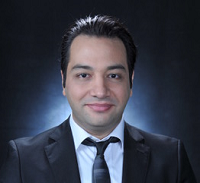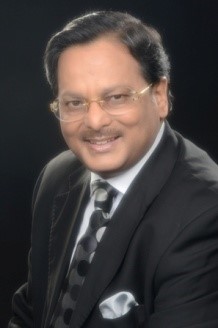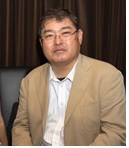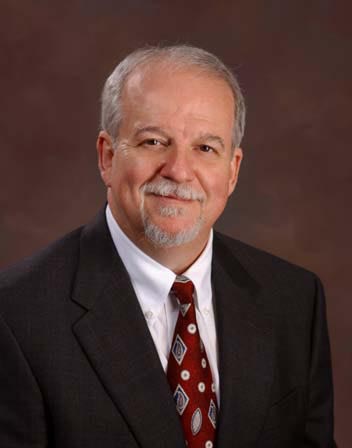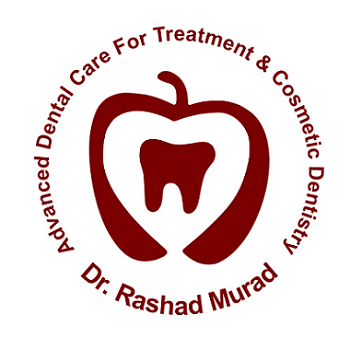
Dental Meeting- 2018
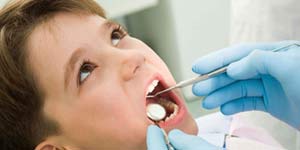
Theme: Evolution of New Horizon on the Unspoken Smiles
Dental Meeting 2018
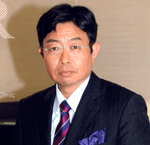
Dear Friends /Colleagues,
It is my great pleasure to welcome you to the International Conference on “Dentistry and Integrated Medicine”, Tokyo, Japan May 07-08, 2018.
Separating dentistry from medicine is the same meaning of separating the oral area from the whole body. Since every part of human body has related each other, this fact is a serious mistake. If the fundamental cause of sickness is in dental area, it is difficult to cure it by means of medical treatments. Please remember that there may be an alternative as dentistry when medical treatment doesn’t show enough effectiveness or having a doubt in standard medical treatment.
“Dentistry and Integrated medicine” is aimed to unify a dentistry and medicine. Not only conventional aspects of dentistry which experimental subject’s limits in an oral area but also dentistry considering the whole-body health conditions are welcomed. They provide a platform that brings together worldwide researchers, innovators and students along with basic and clinical professionals focusing on aspects of the relationship between dentistry and integrated medicine. The medical doctors, nurses and acupuncturists etc. who take interests in integrated medicine as well the people engaged in dentistry are recruited widely. I am delighted to encourage everyone to come, ask questions, make discussions and make new collaborations.
Participants to the event, besides updating and discuss new trends in “Dentistry and the Integrated medicine”, have a unique opportunity to generate international research networks.
I want this conference to become the opportunity by which the serious mistakes that dentistry was separated from the medical department is corrected.
I cordially invite you to participate in this honourable event.
Have safe travels and see you in Tokyo.
With all good wishes,
Dr. Yoshiro Fujii DDS. Ph.D.
Shin-Kobe Dental clinic,
Japan
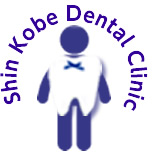
About Conferences:
Meetings International proudly announces the Global Experts Meeting on International Conference on Dentistry and Integrated Medicine scheduled on May 07-08, 2018 in Tokyo, Japan, with a theme of “Evolution of New Horizon on the Unspoken Smiles"
Meetings International provides a Global Platform for Dental Professionals, Dental Care, Medical and Healthcare Professionals to Exchange Ideas, Knowledge and Networking at its 100+ International Conferences.
Dental Meeting 2018 aims to discover advances in Dental practice, management, and education in relation to health disparities as well as a breadth of other topics. A Dental professional has a special set of competence and ability. Not only can they diagnose patients and finally provide medication, but they also serve in leadership and consulting roles. Dentists are prominent and impact health care across the board, from reducing medical complications to improving patient satisfaction.
Dental Meeting 2018 Highlights are listed below:
· Oral medicine
· Diagnosis and Prevention of Oral Disease
· Oral and Maxillofacial Surgery
· Orthodontics
· Prosthodontics
· Oral and Dental Health
· Periodontics and Oral Hygiene
· Restorative Dentistry and Endodontic
· Cosmetic Dentistry
· Oral Oncology
· Dental Public Health and community dentistry
· Radiology
· Focal infection
· Diabetes and Periodontal disease
· Bi-Digital O-Ring Test (BDORT)
· Dementia and Denture
· Skin care, metal allergies around oral area
· Sports dentistry
· Occlusal treatment
· Electromagnetic waves and dentistry
This Conference involves the theoretical and practical training provided to Dentists with the purpose to prepare them for their duties as Dental care professionals. This education is provided to Dental students by experienced Dentists and other medical professionals who have qualified or experienced for educational tasks. Most countries offer Dental education courses that can be relevant to general Dentistry or to specialized areas including Oral medicine, Diagnosis and Prevention of Oral Disease, Oral and Maxillofacial Surgery, Orthodontics, Prosthodontics, Oral and Dental Health, Periodontics and Oral Hygiene, Restorative Dentistry and Endodontic, Cosmetic Dentistry, Oral Oncology, Dental Public Health and community dentistry, Radiology, Bi-Digital O-Ring Test (BDORT), Sports dentistry, Electromagnetic waves and dentistry. Dental Meeting 2018 also provides post-qualification courses in specialist subjects within dentistry.
DentalMeeting2018 will offer you an unmatched attendee experience. In addition to the many scientific sessions and take-home case study examples, you will leave this event with much other evidence-based practice from some of our workshops and symposiums. We hope you will join us in Tokyo, Japan on May 07-08, 2018.
Sincerely,
- Operating Committee
- CEO and Founder
- Meetings International PTE LTD
1. Oral and Dental Health
Oral illness inside varied populace meetings can be signified by the extent of individuals inside that meeting who have rotted, lost or filled teeth. Oral practice meetings and dentist Meeting give the stage to collaborate the oral or dentistry.
Oral Health is vital to universal health and quality of life. Oral health is a condition of being free from the mouth and facial pain, oral infection and sores, oral and throat cancer, gum disease, tooth loss and decay, and other disorders and diseases bound an independent ability in chewing, biting, speaking, smiling and psychosocial wellbeing.
· Diet and nutrition for oral health
· Protection against harmful invader
· Dental and periodontal infections
· Oral Health Education
· Medical emergencies
2. Oral medicine
Oral medicine is referred to dental medicine, oral and maxillofacial medicine or stomatology. It is especially focused on the mouth and their structures. Oral medicine lies between medicine and dentistry. This is mainly concerned with the clinical identification and non-surgical management of non-dental pathologies influence the orofacial region that is the mouth and the lower face.
Many fundamental diseases have signs or symptoms that evident in the orofacial region. Pathologically, the mouth may be afflicted by various cutaneous and gastrointestinal conditions. There is also the unique situation of hard tissues penetrating the epithelial continuity (hair and nails are intra-epithelial tissues). The biofilm which covers teeth causes unique pathologic entities known as plaque-induced diseases.
· Oral Structures and Functions
· Basic Tooth Structure
3. Diagnosis and Prevention of Oral Disease
Nearly all infections of the dental or oral cavity which includes the major dental or tooth decay, dentofacial deformity and periodontitis are the time serving in nature. Common therapy used for the elimination of oral diseases are maxillofacial trauma prevention methods and therapeutics and surgical pathology.
· Evolving instrumentations in dentistry
· Robotic and digital dentistry
· Dental infections and cardiovascular diseases
· Diet, nutrition, and dental diseases
4. Oral and Maxillofacial Surgery
Oral and Maxillofacial (OMF) surgery is novel in demand a double ability in medication and dentistry, and regularly observed as the extension amid solution and dentistry, conditions which require skill from both establishment for instance salivary organ maladies, head and neck malignancies, facial torment, facial lop-sidedness, Antibiotic prophylaxis and early dental implant frustration, Pediatric craniofacial and separated surgery, facial imbalance, temporomandibular joint issue, affected teeth, sores and tumors of the jaws and in addition various issues influencing the oral mucosa, for example, mouth ulcers and contaminations furthermore conclusion and administration of dento-facial distortions.
· Microvascular reconstruction
· Cranio-maxillofacial trauma
· Dental Anesthesiology
· Goldenhar syndrome
5. Orthodontics
Orthodontics also is known as Orthodontia and dentofacial orthopedics is a specialty field of dentistry. Orthodontics is a branch of "dentistry" that express extensive power in nursing patients with uncalled for an order of denticulation when the mouth is closed (malocclusion), which realizes an unseemly snack. Orthodontics is into medicating and controlling various parts of facial development (dentofacial orthopedics) and shape and progression of the jaw. Orthodontics pro is called an orthodontist.
An orthodontist handles an extent of therapeutic dental devices, including plates, props, Cleft Lip and Palate et cetera and uses the late advances in orthodontics like Invisalign methodology, headgears, and Implants.
· Accelerated orthodontic treatment
· Osteopenia
· Implants in Orthodontics
6. Prosthodontics
Prosthodontics is a specialist in the rehabilitation and substitution of teeth that make a grin look delightful and toil the way they should. Implant-based prostheses, Dentures, frameworks, Maxillo-facial prosthetics, Management of temporomandibular issue, Crowns, and full or fragmented implants are just a bit of the framework that can help you recover your grin and enhance your semblance and confidence. The other decision is tooth inserts, a more endless game plan that has upgraded unfathomably over the span of ten years, in the light that leading strategies of prosthodontics.
· Peri-Implantitis
· Chronic periodontitis
· Scaling and root planning
· veneer
· Gum Graft
· Cosmetic Dentures
· Bridges
· Implants
7. Periodontics and Oral Hygiene
Periodontal plague is the most apprehend diseases affecting individuals at the Upcoming dental social events. To the most periodontal afflictions, a Dental biofilm is a benefactor. root organizing and Scaling, Peri-Implantitis and Gum join are a couple of processes which is used for the treatment of periodontal sicknesses.
Oral Hygiene is the execution of keeping the mouth and teeth hygiene to aid dental problems, that are dental cavities, gingivitis, gum diseases and bad breath. The oral pathological conditions in which good oral hygiene is essential things that can be done for our teeth and gums. Blooming teeth is enable us to feel good, which makes us eat and speak properly. Preventive care, which includes proper brushing and flossing, that helps terminate problems before they develop and is less painful, expensive, and worrisome than nursing conditions that have been allowed to progress.
· Chronic periodontitis
· Sterilization and disinfection
· Disinfection of water lines
· Laser applications for dental hygiene
8. Restorative Dentistry and Endodontic
Tooth restoring essay are the various ways your dentist can replace missing teeth or restore missing parts of the tooth structure which is most usually conversed about the subject at the Upcoming dental meetings. Tooth structure can be misplaced because of rot, the decay of a formerly set reclamation conveys, or break off a tooth. Cases of reconstructive attempt incorporate the Dental Fillings, Cosmetic Dentures, Dental Crowns, Implants, and Bridges.
The endodontic expert oversees the progression of endodontic illumination through research, the transference of data concerning the current advances in organically ample methodology and materials; and the order of people in general with regards to the significance of endodontic in keeping the dentition in a physiologically applicable state for the support of oral and systemic wellbeing.
· Root canal therapy
· Stem cell therapy
· Endodontic Instruments
9. Cosmetic Dentistry
From unobtrusive turn to notable repairs, our dentist plays an effort to enhance your broad smile which is most rated in the Dentistry congress and Dentistry workshops. There are various mechanism and alternatives to treat teeth that are missing, stained, distorted, recolored or twisted. A dentist can reshape your teeth, re-establish worn or short teeth or change the length of your teeth, reshape close spaces. The essential basic organization incorporated consolidate passing on, holding, crowns, cleans and reshaping and molding.
· Teeth whitening
· Tooth white dispensary
· Dental implants
· Dental bridges
· Invisalign treatment
· Smile makeover
· Full mouth reconstruction
10. Oral Oncology
Oral Oncology, known as mouth cancer, is a type of head and neck cancer and is any cancerous tissue growth located in the oral cavity. It raises as a chief lesion emerges in any tissues in the mouth, by metastasis from a faraway site of origin, or by extension from an adjacent anatomic structure, such as the nasal cavity. Possibly, the oral cancers may arise in any of the tissues of the mouth and can be diverse types: adenocarcinoma derived from a major or minor salivary gland, or melanoma from the pigment-producing cells of the oral mucosa, teratoma.
There is a different category of oral cancers, of which 90% are scale cell carcinomas, originating in the tissues that line the mouth and lips. The tongue is the most involved part of our mouth. It may occur in the top of the mouth, gingiva (gums), palate (roof of the mouth), cheek lining. Under the microscope most of the oral cancers look homogeneous and are called squamous cell carcinoma, the less uncommon types of oral cancer occur, such as Kaposi's sarcoma. Oncogenes are activated because of mutation of the DNA. The risk factors are being researched and identified in epidemiological (epidemiology) studies. The risk factors for developing oral cancers are Chewing betel, paan, and Areca. In India, such practices are common, oral cancer represents up to 40% of all cancers, compared to just 4% in the UK.
· Squamous cell carcinoma
· Verrucous carcinoma
· Minor salivary gland carcinomas
· Lymphomas
· Oropharyngeal tumors
11. Dental Public Health and community dentistry
Dental public health (DPH) is a non-clinical forte of dentistry that attends with the prevention and aid of oral health. Dental public health is complicated in the evaluation of key dental health needs and coming up with effective formulae to improve the dental health of populations rather than a person.
Prevention is becoming progressively important. Dental diseases are predominantly preventable and there is a growing load on health care systems for a cure. Dental public health focuses beyond the role of a dental practitioner in nursing dental disease and seeks to minimize demand on health care systems by redirection of resources to priority region. Public health, an apprehension of the many factors that influence health that aid the implementation of effective strategies.
Community dentistry is a division of dentistry which regard with prohibition of disease, elongate life and promoting mental and physical efficiency via organized community efforts for the sanitation of the environment, the control communicable infections, the education of independent in personal hygiene and preventive treatment of disease and the evolution of social machinery to secure a standard of living adequate for the preservation of the health.
· Public Health
· Healthcare delivery system
· Nutrition in oral diseases
12. Radiology
Dental radiography is an art of recording images of a patient’s oral structures on film by using X-rays (roentgen rays). When the X-ray films are refined, the resulting radiographs supply the dental officer with a valuable diagnostic aid.
A radiographic image is formed by a controlled burst of X-ray radiation which pierces oral structures at disparate levels, depending on differing anatomical densities, before striking the film or sensor. Due to less radiation teeth appear lighter which penetrates into the film. Dental caries, infections and other changes in the bone density, and the periodontal ligament appear darker because X-rays readily penetrate these less dense structures. Dental restorations (fillings, crowns) may appear lighter or darker, depending on the density of the material.
When taking radiographs, the patients wear lead aprons and thyroid collars to shield their reproductive organs and thyroid glands. There is only one exception to this rule; when obtaining a panorex radiograph, the thyroid collar is not used since it blocks part of the X-ray beam.
· Intraoral Radiographs
· Panoramic X-rays
· Digital Radiographs
· MRI Imaging
13. Focal infection
A focus of infection is a confined area that holds pathogenic microorganisms that occur all over the body and usually causes no clinical manifestations. A focal infection is a localized infection caused by the dissemination of microorganisms or toxic products from a focus of infection. These concepts have led to the Focal Theory of Infection that postulates a myriad of diseases caused by microorganisms (bacteria, fungi, viruses) that arise endogenously from a focus of infection.
· Nature of Focal Infection
· Significance of Foci of Infection
· Mechanisms of Focal Infection
· Treatment of Focal Infection
14. Diabetes and Periodontal disease
Diabetes is a major risk factor for periodontitis. Periodontal diseases are infections of the gum and bone that clutch teeth in place. In advanced stages, they lead to painful chewing problems and even tooth loss. When compared to non- diabetic individuals the risk of periodontitis is increased by threefold in diabetic individuals. The level of glycaemic control is of key importance in determining increased risk.
Periodontitis is a chronic inflammatory disease by destruction of the supporting structures of the teeth (the periodontal ligament and alveolar bone). It is highly widespread which severe periodontitis affects 10–15% of adults and has multiple negative impacts on quality of life. Epidemiological data confirm that diabetes is a major risk factor for periodontitis; susceptibility to periodontitis is increased by approximately threefold in people with diabetes. Treatment of periodontitis is associated with HbA1c reductions of approximately 0.4%. Oral and periodontal health should be promoted as integral components of diabetes management.
· Impact of periodontitis
· Gingivitis
· Altered wound healing
15. Bi-Digital O-Ring Test (BDORT)
1) Highly sensitive electromagnetic field (EMF) resonance phenomena between 2 identical molecules with identical weight.
2) when abnormal part of the body or tissue above it is stimulated by minute mechanical force or monochromatic light beam. If there is an abnormality, O-Ring made by selected 2 fingers between thumb & another finger, suddenly O-ring becomes weak and it will open when the examiner is trying to pull the 2 fingers apart from the sides of the examinee’s O-Ring. When examiner can open O-Ring very easily, it is defined as Bi-Digital O-Ring Test minus (-). When examiner cannot open O-Ring with O-Ring made by examiner’s two fingers, it is called (+)1. If it does not even open with 3 fingers, it is called (+)3. The number of the openings of the O-Ring made by different fingers increases proportionally to the degree of medical problems. If the O-Ring does not open, it is called positive. When O-Ring is open, it is called negative. For example, if 3 O-Rings open, it is called (-)3. Using this non-invasive test, one can localize the abnormal area of the body rapidly with one exception: where the only exception is Thymus gland where when Thymus gland is normal, BDORT is negative (-)2~(-)5when it is normal.
3) when the monoclonal light beam is projected to the body surface, like when the red-colored laser beam is projected if the specific molecule is placed near light beam, information on molecular structure & weight will be transmitted by direction towards where the laser beam is going. At the same time, the same information will be transmitted towards the source of where the laser beam coming from.
4) imaging of outline of internal organs using EMF resonance phenomena between internal organs inside of the body & microscope slides of the same internal organs. You can detect the boundary between resonance & non-resonance area without using expensive, bulky imaging device.
· Indirect Method
· Solar energy stored papers
16. Dementia and Denture
Dementia, one of the main causes of disability later in life, is a progressive, neurodegenerative disease that affects the capacity to conduct daily living activities. It results in a decline in multiple areas of function, including memory, communication and reasoning skills and includes psychological symptoms such as depression, psychosis, and aggression. Dementia is a disease of progression and is categorized into three different stages, those being early, middle (moderate) and later (severe) stages of dementia. When designing a plan of care for a patient with dementia, it is important to understand the stage of the disease. Patients with dementia can lose teeth though it is not clear if the risk, rate of tooth loss or prevalence varies for those with dementia compared to those without.
A denture is a detachable replacement for missing teeth and surrounding tissues. Two types of dentures are available to complete and partial dentures. Complete dentures are used when all the teeth are missing, while partial dentures are used when some natural teeth remain.
· Vascular dementia
· Mixed dementia
17. Skin care, metal allergies around oral area
Contact dermatitis is usually produced by external exposure of the skin to an allergen; however, sometimes a systemically administered allergen may reach the skin through the circulatory system and thereby produce systemic contact dermatitis. Systemic contact dermatitis (SCD) is an inflammatory skin disease that is known to occur with exposure to drugs, foods, and dental metals. A variety of types of skin eruptions have been reported, including flares of previous patch test sites, symmetrical intertriginous and flexural exanthema, exfoliative erythroderma, and widespread dermatitis.
An allergy may be defined as acute immunological responses that occur when encountering a known antigen. Allergy can either be an immediate humoral response or delayed cell-mediated response. Allergic reaction to a metal comes from the presence of ions following ingestion, skin or mucosal contact, or from implant corrosion processes. These ions, although not sensitizers, form complexes with native proteins and act as allergens causing hypersensitivity reactions.
· Corrosion and Dental implants
· Dental implant material
· Allergies in Oral Facial region
18. Sports dentistry
Sports dentistry is a recent and forthcoming field of dentistry. It mostly includes the prevention and administration of athletics-related orofacial injuries and related oral diseases. The sports or team dentist assists athletes in the prevention, treatment, and diagnosis of oral injuries. The most significant aspect in preventing sports-related orofacial injuries is tiring basic protective devices such as properly-fitting helmets, mouth guards or facial guards. Many athletes are not well informed of the health implications of a traumatic injury to the mouth or of the potential for incurring severe orofacial injuries and head while playing. The dentist plays an imperative role in enlightening athletes, coaches, and patients the importance of preventing orofacial injuries in sports.
· Evaluation of facial injuries
· Mouth guard role and necessity in sport dentistry
19. Occlusal treatment
The first step in treating the occlusion is performing an occlusal assessment. An individual is taken through different movements of the lower jaw to determine the correlation of the upper teeth to the lower teeth. Also, evaluation of wear on the surfaces of the teeth, the mobility of the teeth, muscles used for chewing, and the joints of the lower jaw are evaluated.
· Localized Occlusion Trauma
· Tooth equilibration
· Bite adjustment
· Occlusion guards
20. Electromagnetic waves and dentistry
The use of electronic devices, such as mobile phones and personal computers, has become increasingly widespread, thereby permitting communication on a global scale. Although these devices have ease communication, reports have illustrated abnormalities in the body caused due to electromagnetic waves.
In the field of dentistry, titanium dental implants have been commonly associated with the antenna-like activity, although the underlying mechanism remains unknown. The treatment involves electromagnetic wave-induced movements using a gold alloy dental inlay as well as dental treatments for dizziness and joint mobility disorders caused by harmful electromagnetic waves.
· Magnetic Field from dental devices
· Corrosion of Intraoral Metallic Appliances via Induced Currents
Global dental Market:
Global Dental Market is expected to be more than US$ 50 Billion market by 2020; growing with double digit CAGR. Dental Equipment has the highest market share among all the 7 segments (Preventive Dental Care Market, Dental Restoratives Market, Dental Prosthetics Market, Dental Implants Market, Dental Orthodontics Market, Dental Endodontic Market and Dental Equipment Market). The global dental equipment market has been estimated at USD 6.2 billion in 2016 and is projected to reach USD 8.5 billion by 2021, at a CAGR of 6.5 % during the forecast period from 2016 to 2021.
Growth in this market can primarily be attributed to factors such as the rapid growth in aging population, increasing demand for cosmetic dentistry, and growing incidence of dental caries and other periodontal diseases.
29 dentists/ 100000 inhabitants
Total no. of dental schools: 550
Why Japan?
Japan is fast gaining an enviable reputation for the quality of its oral care, backed by its well-versed Universities and their implementation in dental and oral health which gives them better access to health services, including dental services.
Furthermore, rising awareness of dental and oral health and hygiene, a growing population and increasing per capita incomes will ensure a constant increase in demand for dental products and services.
Asia Pacific Dental market
Dental implant penetration: Penetration of dental implants among the Asia Pacific countries varies. Japan has the highest dental implant-to-population ratio, while Australia and India have the lowest. Penetration is four times higher in Japan relative to the other two countries.
Procedure volumes: South Korea represents the largest Asia Pacific market in terms of procedure volumes, with about three times as many procedures performed relative to Japan, which has the second-highest procedure volume.
Market values and pricing: However, the Japanese and South Korean markets generate similar revenues because price competition is severe in South Korea, resulting in very low selling prices. This is largely due to local low-cost competitors such as OSSTEM IMPLANT, Dentium and DIO Implant.
Oral health awareness: In China and India, market growth will be particularly rapid. Oral health awareness is growing in these emerging markets, causing more patients to seek out treatment. In many cases, patients' teeth are so badly infected that dental implants are the only treatment option
Dental Conferences

Figure1: Dental Conferences in Asia
Target Audience:
The Professors, Dentists, Researchers, Clinicians, Educators, Marketing, and Students from Academia in the study of Oral care and dental Hygiene.
Academic-50%
Industries-40%
Others-10%
Glance at Market of Oral Care and Dental Hygiene:
World’s Dentists market research report can be used to help you: understand market size and growth potential; major companies; draft business plans and pitch books; and conduct benchmarking and SWOT analysis. Dentists perform a range of services that typically fall under general or specialty dentistry. Accounting for about 84.0% of dentists in the industry, general dentists provide services, such as preventive care, diagnosis and treatment planning, and procedures, such as fillings, dentures and extractions. Specialty dentistry, which includes Endodontics, oral surgery, orthodontics, periodontics, prosthodontics and pediatric dentistry, makes up an estimated 16.0% of practicing dentists.
Dental visits and consultations:
In 2015, dental visits and consultations are expected to make up 32.3% of total revenue. This product segment includes prevention services (16.3%), as well as consultation and diagnostic services (15.9%).

Figure 2: Dental visits and consultations
- Oral medicine
- Diagnosis and Prevention of Oral Disease
- Oral and Maxillofacial Surgery
- Orthodontics and Dental Implants
- Prosthodontics
- Oral and Dental Health
- Periodontics and Oral Hygiene
- Restorative Dentistry and Endodontic
- Cosmetic Dentistry
- Oral Oncology
- Dental Public Health and community dentistry
- Radiology
- Focal infection
- Diabetes and Periodontal disease
- Bi-Digital O-Ring Test (BDORT)
- Dementia and Denture
- Skin care, metal allergies around oral area
- Sports dentistry
- Occlusal treatment
- Electromagnetic waves and dentistry
- Dental Health: Current Research
7 Organizing Committee Members
6 Renowned Speakers
Dr. Yoshiro Fujii
CEO, Shin-Kobe Dental clinic
Japan
Dr. ArupRatan Choudhury
Department of Dentistry,
BIRDEM Hospital (WHO Collaborating Center)
Bangladesh
Bangladesh
Dr. Susumu Oshimura
DDS, PhD, Oshimura Dental Clinic, Nagoya, Japan
Japan
Dr Dave Singh
President of Vivos BioTechnologies, Inc.
USA
Dr. Hasan Necdet Alkumru
University of Western Ontario, Schulich School of Medicine and Dentistry, CANADA
Canada
Dr. James E. Jones
Starkey Research Professor
Department of Pediatric Dentistry
Indiana University School of Dentistry
USA













